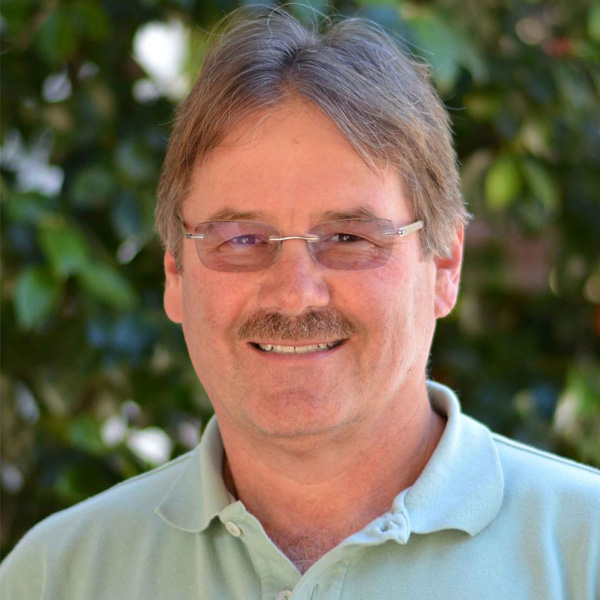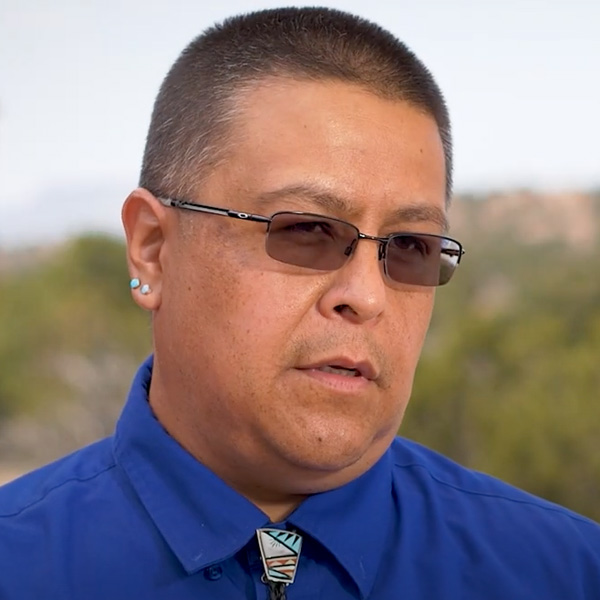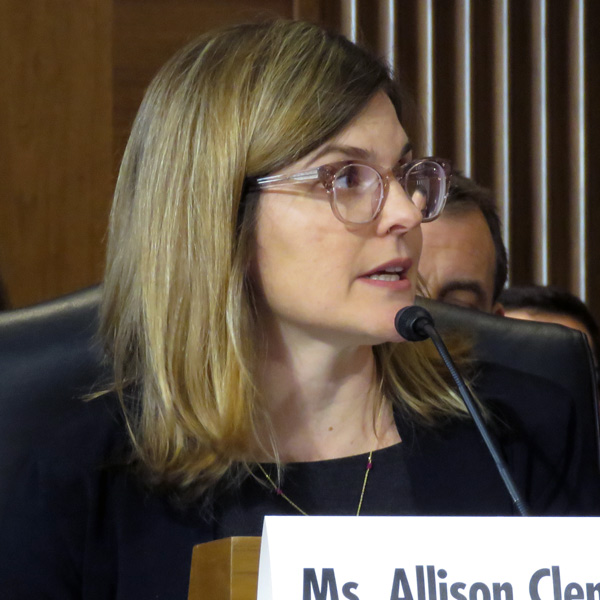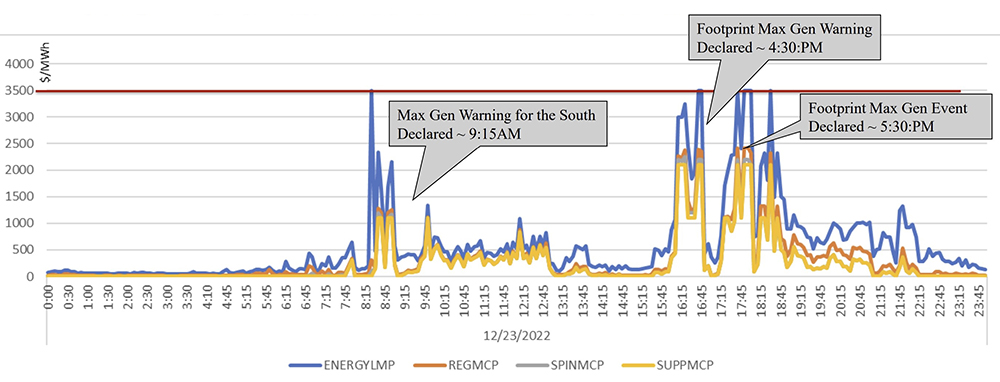VANCOUVER, British Columbia — Scott Stephens, professor of fire science at the University of California, Berkeley, last week offered an unexpected piece of advice for Western U.S. states and Canadian provinces that face a rising danger of catastrophic wildfires.
“Don’t do what California did,” Stephens said Wednesday during the opening panel of the Western Interstate Energy Board’s (WIEB) Winter Wildfire Meeting.
 Scott Stephens | University of California, Berkeley
Scott Stephens | University of California, BerkeleyAt the core of Stephens’ advice was a seemingly paradoxical message that would be reinforced by other panelists throughout the conference: that the growing wildfire threat in the West is as much a product of a century of strict fire-suppression practices than of climate change.
Stephens opened his presentation with a picture showing the aftermath of the 2021 Dixie Fire, the second largest wildfire in California history, which scorched more than 963,000 acres and destroyed several small communities over that summer. California’s Department of Forestry and Fire Protection later pinned the source of the fire on a Pacific Gas and Electric distribution line that was struck by a tree. (See Cal Fire Finds PG&E Started Massive Dixie Fire.)
“The Dixie Fire was horrendous. It is a disaster times 10,” he said. “I’ve been in that thing [burn area] for about three weeks in June of last year to see some of the effects. It literally is something that can make you cry: the damage to the forest ecosystem; [it] burned down the town of Greenville. There’s so many connotations to this that we’ve got to do better.”
‘This is a Disaster’
For Stephens, doing better means looking back to a time before the displacement of indigenous peoples, who for centuries engaged in the practice of controlled burns to maintain forest health and prevent large-scale wildfires that could threaten their living spaces.
Stephens pointed to a study from 1924 that described California’s pine forests as “broken, patchy, understocked stands, worn down by the attrition of repeated light fires.” The ground contained little surface fuel, and extensive crown fires — in which the fire moves from treetop to treetop rather than along the forest floor — were “almost unknown,” the researchers found.
But since that time, federal and state policy has aimed to discourage the spread of any fires, even those occurring naturally. That has fostered the development of denser forests where trees increasingly compete for space, compromising the health of many of the oldest, most fire-resistant trees, and creating fuel load to feed the fast-moving and highly destructive crown fires that have plagued California in recent years. On top of that, many of the largest trees most resistant to burning have been harvested for lumber.
A 2022 study cited by Stephens found that in 1911, 73 to 85% of California’s mixed conifer forests were in a condition of “free” or “partial” competition among trees. By 2011, 82 to 93% of those forests were in “full occupancy” or “imminent mortality.”
“This is a disaster,” he said. “If you have a forest ecosystem going into climate change with those characteristics, you better just hold on, because that forest is not resilient.”
Stephens said the increasing number of unhealthy, fallen trees on the forest floor translates into heavy fuel loads that make it impossible to predict how fires will behave once they start. He noted that the 2020 Creek Fire in the Sierra National Forest, which burned nearly 380,000 acres, occurred under normal wind, temperature and humidity conditions. The fire was not driven by wind but by dead wood on the ground, and its movement defied models designed to predict how it would spread.
“This was actually kind of scary, both for our managers [and] utilities … because it tells us that not a single model in the United States is able to predict what these fires can do under the worst conditions,” he said.
Stephens finds hope in a different approach to forest management that draws on the historical practices of indigenous peoples. For more than a year he’s been participating in the Stewardship Project, which he described as a “50/50 partnership” among tribes and “Western science” across the Western U.S. The project aims to address issues such as a tribal right to steward forests, regulatory reform around fire-management practices and workforce development to manage woodlands.
“What we’re trying to do is come up with some policy recommendations for the federal government,” said Stephens, who sits on the Wildland Fire Mitigation and Management Commission, created by the Infrastructure Investment and Jobs Act of 2021.
He recommends that policymakers allow forest managers to adopt practices that include prescribed burns when conditions permit, as well as “restoration thinning,” which would entail mechanical removals that focus on what should be left behind to create a more resilient forest — based on tree species, sizes and spatial patterns — rather than what should be taken out. And although some tree removals might end up in sawmills, economic harvesting of timber would not be a priority.
‘Era of Megafires’
“When Scott comes here and tells me, ‘Don’t do what we did,’ it makes me nervous because we keep watching to learn from California and to help us track where we’re going and the attempts that we’re making to be proactive in this same space,” said Lori Daniels, a professor in the Department of Forest and Conservation Sciences at the University of British Columbia.
About 95% of British Columbia’s land is publicly owned, and the province contains about 235.8 million acres of forest, of which nearly 59.3 million are actively managed. Roughly 494,000 acres are harvested annually, although that number has declined in recent years, according to Daniels.
Daniels said the province has already adopted a timber harvesting policy that is “meant to emulate what fire used to do on our landscapes.”
The province experiences about 1,700 fires a year, with lightning causing 60% and humans the other 40%. About 94% of all fires are quickly extinguished.
“So the only fires that we have experienced in our lifetime are the top 6% that burned under extreme weather, heat, drought [and] wind and escaped all our modern technologies to put out fires. So we have this really biased view of what fire is,” she said.
As in California, fire-suppression practices over the past century have resulted in denser forests that are now fueling larger wildfires in British Columbia in recent years. While the province has experienced some large burns in the past (about 1.7 million acres in 1920 and 2.1 million acres in 1958), recent years have seen fires growing even bigger. In both 2017 and 2018, it saw burns exceeding 2.9 million acres. During the Pacific Northwest heat wave of summer 2021, temperatures in the village of Lytton hit a record-shattering 121.3 degrees Fahrenheit on June 29. The next day, a fast-moving wildfire swept through the area, destroying 90% of the village and killing two people.
“It’s the cumulative impacts of both extreme weather [and] these land-use changes that have been building up over a century,” Daniels said, adding that we live in an “era of megafires.”
Daniels said British Columbia’s success in extinguishing wildfires has made residents “naive,” thinking they can dial 911 to have firefighters put out any fire.
“Our fear and our desire to protect our lives and homes — and our forests and our livelihoods — from fire has contributed to the problem,” Daniels said, noting the importance of logging to the region’s economy. The province’s forests are still managed with an eye to maintaining timber harvests, which has “homogenized the landscape” and puts the focus on economics rather than forest resilience.
But conditions have changed, she said, and there is now a need to put “pressure on our decision-makers to make it a priority to make the [policy] changes that are needed.”
Key among those changes is the need to “coexist with fire” in the landscape. The province has already moved in that direction, having in 2014 adopted a policy of permitting some fires to burn in locations away from communities when it’s considered safe to do so — allowing “fire back as part of the ecosystem, creating heterogeneity and breaking up those fuels,” Daniels said.
It’s an approach to forest management that New Mexico has also recently adopted, according to Lindsey Quam, deputy state forester and tribal liaison for the New Mexico Energy, Minerals and Natural Resources Department’s Forestry Division, who spoke on a separate panel Thursday.
Quam said that in New Mexico, climate change is bringing higher temperatures and a windy season that starts earlier and lasts longer, “which is drying out our fuels a lot faster,” particularly in the “high country” areas at elevations of about 12,000 feet.
“We’re working outside the norms of what we’re used to, predicting what fire may do; what winds may do; what temperatures may do. How that’s going to impact or affect fuels is getting harder and harder” to predict, Quam said. “Our models can’t keep pace. Our models are working beyond what they were built and designed for, so we don’t have a good prediction in order to know what we may be facing out in the forest.”
‘Fire is not the Enemy’
In response to the changing conditions, in 2020 the New Mexico Forestry Division implemented the Forest Action Plan, a “science-based” plan that uses geospatial analysis to assess threats to the state’s natural and cultural resources. The plan includes 10 strategies, including those related to forest and watershed restoration, fire management and utility rights of way (ROWs). The latter strategy seeks to work with utilities to clear out ROWs to reduce wildfire risk and ignition, providing $1 million in state funds to support those efforts. It also works to incorporate state utility data into the federal Wildland Fire Decision Support System for guidance during wildfires.
Additionally, New Mexico lawmakers in 2021 passed the Prescribed Burning Act, which focuses on encouraging more prescribed burns on the state’s private lands. The law is intended to reduce liability for private landowners and created a program to certify burners.
 Lindsey Quam | New Mexico Forestry Division
Lindsey Quam | New Mexico Forestry DivisionQuam pointed out that recent studies on New Mexico’s Jemez Mountains and Gila National Forest indicate that past fires in those areas were larger but less destructive than present-day burns. He said the research is finding that those fires were purposely set by tribes “to create a defensible space around their living areas.”
“We have to consider that we really need to look at science and what science is telling us and incorporate that into our times, but we also need to incorporate a lot of traditional cultural knowledge as well,” Quam said.
Speaking on a different panel Thursday, Oregon Public Utility Commissioner Letha Tawney said she was struck by the fact that when colonists and “resource extractors” came into the West, they were encountering a land that was being actively managed by the indigenous inhabitants.
“I think we still persist — or I still persist — unwittingly in a very strong sense that there was a pristine wilderness” until the intervention of the past 150 years, Tawney said, but the evidence is clear that European settlers “walked into a landscape that was being actively and quite professionally managed, and had been for probably millennia.”
“Fire is a cycle. Fire is a process. Fire is not the enemy,” said Kit O’Connor, a research ecologist with the U.S. Forest Service.
“Wildfires are treating acres faster than we ever will be able to, so if we’re not using wildfire as part of our equation in solving this problem, then we’re ignoring the biggest tool that we have in front of us,” O’Connor said.
“Sometimes it just feels like hope is out of the sail,” Stephens said. “It’s just like, ‘Wow, what are we going to do? All we’re going to do is basically get beat up.’ That is not necessary. There really is hope to actually do some work that actually can make a difference.”



